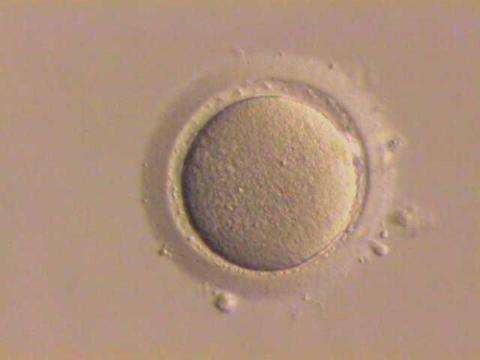Functional Eggs Created from Adult Female Cells
 In a move that may end up having major impact on women, a team working in the center of Nobel Prize winning researcher Shinya Yamanaka has repeatedly made functional eggs— resulting in healthy live births— from adult mouse cells.
In a move that may end up having major impact on women, a team working in the center of Nobel Prize winning researcher Shinya Yamanaka has repeatedly made functional eggs— resulting in healthy live births— from adult mouse cells.
Dogma dictates that female mammals, including humans and mice, cannot make new eggs (oocytes) after birth. The deterioration of women’s few remaining eggs at midlife causes a spiraling decline in reproductive hormones and fertility, and eventually the rise of menopause. If researchers repeat the above feat on human cells, women may be able to make new eggs throughout their lives— from adult cells, such as their skin cells— letting them give birth throughout their lives.
Since menopause is linked to hormones emitted by oocytes, the new procedure might also eventually lead to a postponement of menopause.
The lead scientist responsible for the advance— Mitinori Saitou of the Center for IPS Cell Research and Application in Kyoto, Japan— is working on translating his work to human cells. He believes it will eventually be feasible. But he cautioned in an email to Bioscience: “It is very difficult and requires more basic research.”
Saitou and his main partner in this work, Katsohiko Hayashi, first made the advance last year. In a November 2012 Science, the team described its delicate stepwise transformation of both mouse embryonic stem cells (ESCs) and induced pluripotent stem cells (IPSCs), embryonic-like cells dedifferentiated from adult cells, into oocytes.
The two had earlier pulled off the same feat with male mice, creating functional sperm out of both ESCs and IPSCs created from adult male cells.
The crowning touch was the live, healthy births they generated from the oocytes they created both from the adult cells and the ESCs, proving their eggs worked.
Colleagues have since been lauding the crew for its painstaking, careful work. Some scientists working with pluripotent cells like ESCs and IPSCs can simply bombard the cells with growth factors, then pick out those cells that happen to develop into the types they need, as Nature noted this August. But Saitou and Hayashi carefully captured, and catalogued, the distinct processes that appear to mimic many of those occurring in nature.
Once the cells reached the stage of primordial germ cells, the team did— and still does— have to place them in the testes of male mice, and the ovaries of female mice, to finish the process. That is, they had to rely on the reproductive systems of the animals to finish the job and generate sperm and oocytes.
But the team is working on isolating the recipe for that last step, too, Saitou tells Bioscience.
In the past several months, the duo have been publishing work describing their advances in greater depth. Nature contacted, for its August article, several groups who say they have replicated the team’s results— if none have yet tried to create live births. An immediate advantage of creating oocytes this way is that vast quantities of the cells can be created for study. Only about 40 primordial germ cells naturally exist in mouse embryos. Dogma dictates the cells do not exist at all in adult mammalian females.
The team’s boss, Yamanaka, director of the Center for IPS Cell Research and Application, won the Nobel Prize last year for his 2006 and 2007 creation of IPSCs from adult mouse and human cells, respectively. Japan has since been pouring copious funds into IPSC work, prompting the formation of the above center, among many others.
The team repeatedly warns it will take a while to transfer the work to human cells. One of the many roadblocks is that lab-made IPSCs may contain all the mutations of the older cells from which they are derived. This is significant. Most cells accumulate mutations with age. For example, the blood stem cells of a 50-year-old can contain 500 mutations, 10 mutations for every year of life, according to one study. The cell culturing process can also cause mutations. Isolating mutation-free cells alone will be a challenge.
Right now, the duo have moved on to primate cells— 20 primate embryos a week. Hyashi told Nature they hope to repeat the mouse work in monkeys in five to ten years. They have been given a five-year, $12 million grant to achieve this.

